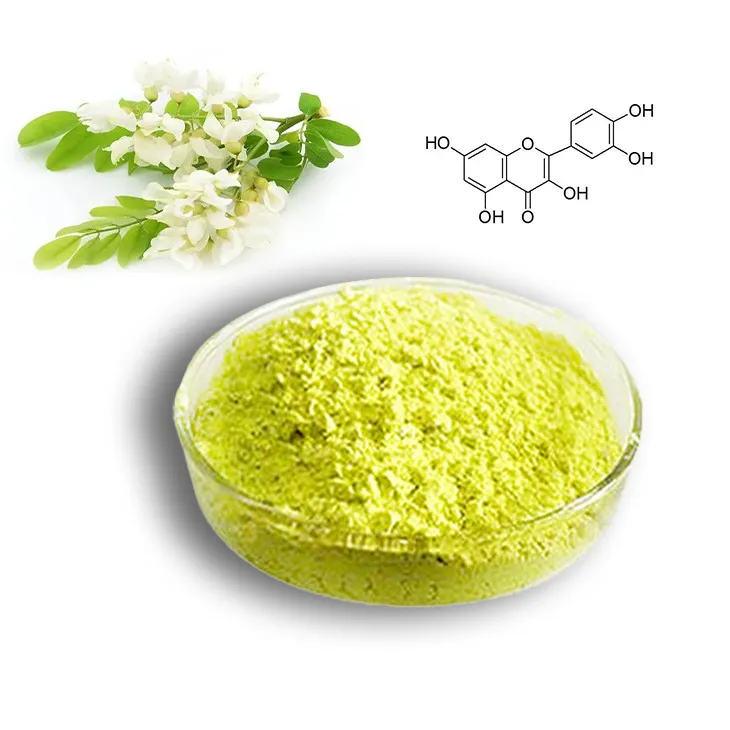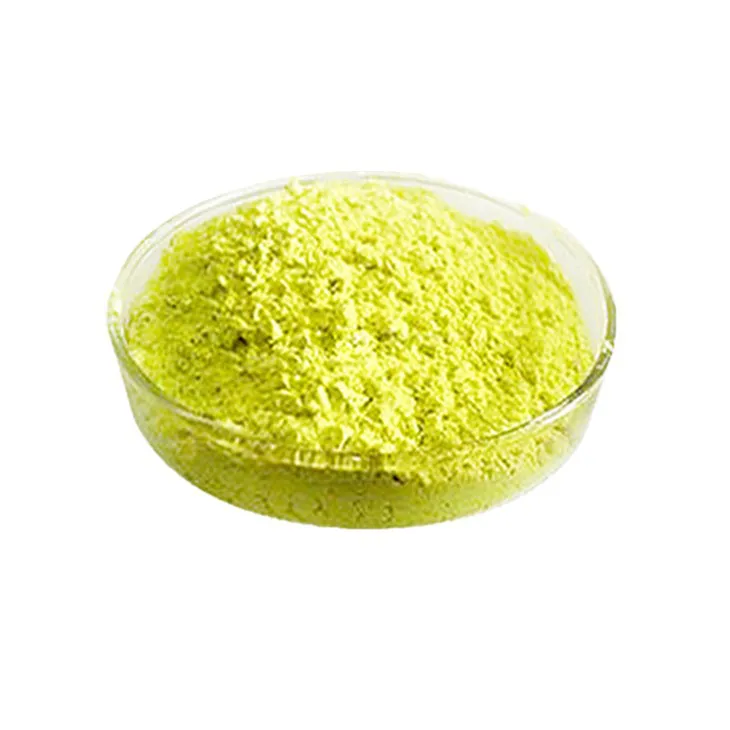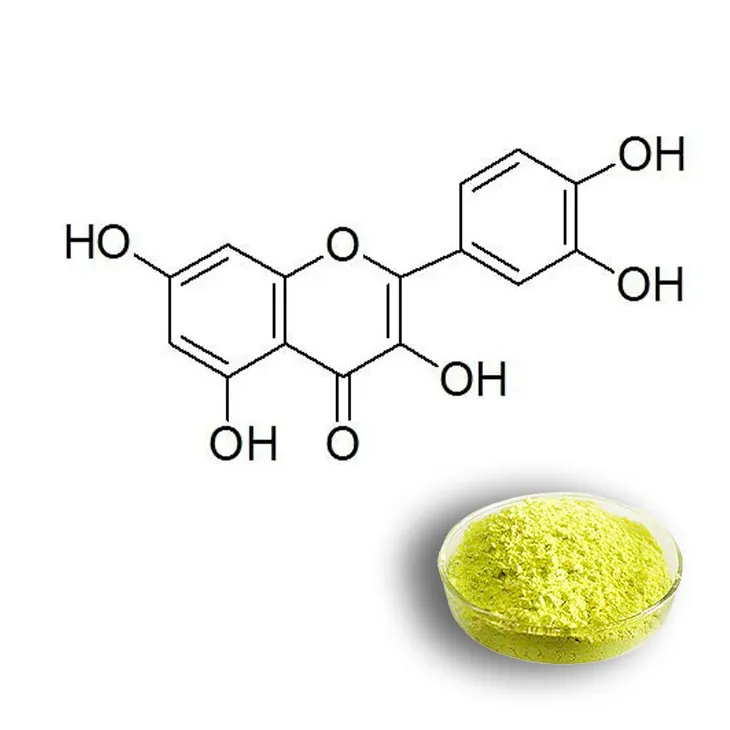- 0086-571-85302990
- sales@greenskybio.com
Organic Quercetin Powder Factory.
2024-11-27

1. Introduction
Organic Quercetin powder factories play a crucial role in the supplement industry. They are the entities that bridge the gap between natural plant sources and the concentrated, beneficial Quercetin powder that consumers seek. Quercetin, a flavonoid with numerous potential health benefits, is sourced from plants and transformed into a market - ready product within these factories.

2. Raw Material Selection
The process of producing organic quercetin powder starts with a meticulous and discerning selection of raw materials.
2.1 Criteria for Selection
Only plants that adhere to the strictest organic criteria are considered for use. This selection is not arbitrary but is based on multiple factors.
- The quercetin content in different plant varieties is a primary consideration. Some plants may naturally have a higher concentration of quercetin, making them more desirable as raw materials. For example, certain types of fruits, vegetables, and herbs are known to be rich sources of quercetin. Among them, onions, apples, and buckwheat are often studied for their relatively high quercetin levels.
- The availability of sustainable sources also weighs heavily in the selection process. With the increasing demand for organic products, it is essential that the raw materials are sourced in a way that does not deplete natural resources or harm the environment. This may involve working with local farmers who practice sustainable agriculture or relying on plants that can be easily and ethically cultivated on a large scale.

3. Processing Steps
Once the appropriate raw materials have been selected, they then embark on a series of processing steps within the factory.
3.1 Cleaning
The first step in the processing chain is cleaning. This is a vital step as it helps to remove any dirt, debris, or contaminants that may be present on the surface of the plants. Different cleaning methods may be employed depending on the nature of the raw material. For example, for small - sized fruits or seeds, a gentle washing with water may be sufficient. However, for larger plant parts or those with a more complex structure, more elaborate cleaning procedures such as brushing or air - blowing may be required to ensure a thorough clean.
3.2 Drying
After cleaning, the raw materials are subjected to drying. Drying serves multiple purposes. Firstly, it helps to reduce the moisture content of the plants, which is essential for subsequent processing steps. A high moisture content can lead to spoilage or the growth of mold and bacteria, which would render the raw materials unfit for use. Secondly, drying can also help to concentrate the quercetin content within the plant material. There are various drying methods available, such as air - drying, sun - drying, and mechanical drying. Each method has its own advantages and disadvantages. Air - drying is a natural and cost - effective method, but it may be time - consuming and dependent on environmental conditions. Sun - drying is also a traditional method, but it may expose the raw materials to potential contaminants in the open air. Mechanical drying, on the other hand, offers greater control over the drying process but requires the use of specialized equipment.
3.3 Extraction
Following drying, the extraction process takes place. The aim of extraction is to isolate quercetin in its purest form from the dried plant material. This is a complex process that often involves the use of solvents.
- Different extraction solvents may be used, such as ethanol, methanol, or water - based solvents. The choice of solvent depends on several factors, including the solubility of quercetin in the solvent, the safety and toxicity of the solvent, and the desired quality of the final product. Ethanol, for example, is a commonly used solvent as it has a relatively high solubility for quercetin and is considered to be relatively safe for use in food - grade products. However, the extraction process needs to be carefully controlled to ensure that the solvent does not leave any harmful residues in the final quercetin powder.
- There are also different extraction methods available. Some common methods include maceration, percolation, and Soxhlet extraction. Maceration involves soaking the dried plant material in the solvent for a period of time to allow the quercetin to dissolve into the solvent. Percolation is a continuous extraction method where the solvent is passed through the plant material. Soxhlet extraction is a more efficient method that uses a reflux apparatus to continuously recycle the solvent over the plant material, resulting in a more complete extraction of quercetin.

4. Purification
After extraction, the quercetin - rich extract obtained still contains some impurities. Therefore, purification processes are carried out to remove these unwanted substances.
- One common purification method is filtration. Filtration can be used to remove larger particles such as plant debris or undissolved solids from the extract. There are different types of filtration media available, such as filter papers, membranes, or filters with different pore sizes. The choice of filtration method depends on the size and nature of the impurities to be removed.
- Another purification technique is chromatography. Chromatography is a more sophisticated method that can be used to separate quercetin from other closely related compounds or impurities based on their different chemical properties. There are several types of chromatography, such as column chromatography, thin - layer chromatography, and high - performance liquid chromatography (HPLC). HPLC is often used in the production of high - quality quercetin powder as it can provide a high level of separation and purification.

5. Research and Development
Organic quercetin powder factories also invest in research to fully understand the potential of quercetin and to improve their products.
5.1 Interaction with the Human Body
Studies are carried out to investigate how quercetin interacts with the human body. Quercetin has been shown to have antioxidant, anti - inflammatory, and anti - carcinogenic properties. Research aims to understand how it is absorbed, metabolized, and excreted in the body. For example, understanding the bioavailability of quercetin - how much of it is actually absorbed and utilized by the body - is crucial for formulating effective products. Some factors that can affect quercetin's bioavailability include its chemical form, the presence of other substances in the diet that may enhance or inhibit its absorption, and the route of administration (e.g., oral ingestion vs. topical application).
5.2 Synergistic Effects with Other Nutrients
Another area of research is the study of quercetin's synergistic effects with other nutrients. It has been hypothesized that quercetin may work in combination with other vitamins, minerals, or bioactive compounds to produce enhanced health benefits. For example, some studies suggest that quercetin may interact with vitamin C to enhance antioxidant activity. Research in this area can help factories develop product formulations that contain a combination of nutrients to maximize the potential health benefits for consumers.
5.3 Optimization of Formulation
Factories also conduct research to optimize the formulation of quercetin powder for different consumer needs. This may involve adjusting the concentration of quercetin in the product, adding other ingredients to improve taste or stability, or developing different forms of the product such as capsules, tablets, or powders for different applications. For example, for consumers who prefer a convenient and easy - to - take supplement, capsules or tablets may be a better option. For those who want to add quercetin to their food or drinks, a powdered form may be more suitable.
6. Packaging and Labeling
Packaging and labeling are critical aspects of the factory's operations as they are the means by which the factory communicates important information to consumers.
6.1 Packaging
The choice of packaging material is important for protecting the quercetin powder from factors such as moisture, light, and air, which can degrade the quality of the product over time. Common packaging materials include plastic bottles, foil - lined bags, or glass containers. Plastic bottles are often lightweight and convenient, but they may not provide the best protection against light and air. Foil - lined bags can offer better protection against moisture and air, but they may be more difficult to handle. Glass containers are inert and provide good protection, but they are heavier and more fragile.
6.2 Labeling
Labeling must provide accurate information about the product's contents and usage instructions. The label should clearly state the amount of quercetin in the product, the source of the quercetin (i.e., which plants it was derived from), any other ingredients present, and recommended dosage. It should also include any relevant warnings or precautions, such as potential interactions with medications or side effects. In addition, the label may also contain information about the product's organic certification, manufacturing date, and expiration date.
7. Conclusion
Organic quercetin powder factories are complex operations that involve multiple steps from raw material selection to packaging and labeling. Through careful control of each step in the production process, these factories are able to produce high - quality quercetin powder products that can meet the diverse needs of consumers in the supplement market. Continued research and development in the field will further enhance the understanding and utilization of quercetin, leading to even better products in the future.
FAQ:
What are the main raw materials for organic quercetin powder production?
Organic quercetin powder factories mainly select plants that meet the strictest organic criteria as raw materials. Different plant varieties with suitable quercetin content and sustainable sources are considered. For example, some common plants rich in quercetin may be used, but the specific choice depends on various factors such as quality and availability.
What extraction methods are commonly used in the production of organic quercetin powder?
Different extraction solvents and methods may be used in the production. The choice depends on the desired quality and characteristics of the final product. However, the overall aim is to isolate quercetin in its purest form. Common extraction methods might involve using appropriate solvents to draw out the quercetin from the plant material during the extraction process.
How do organic quercetin powder factories ensure the purity of the product?
After extraction, purification processes are carried out to remove any impurities. This helps in ensuring the purity of the organic quercetin powder. The factory has strict quality control measures in place throughout the production process, from raw material selection to the final product, to maintain high - quality and pure quercetin powder.
Why is research important in an organic quercetin powder factory?
Research is crucial as it helps the factory understand the full potential of quercetin. This includes studies on its interaction with the human body, possible synergistic effects with other nutrients, and ways to optimize its formulation for different consumer needs. By conducting research, the factory can produce a more effective and targeted product.
What information should be included on the packaging and labeling of organic quercetin powder?
The packaging and labeling should provide accurate information to consumers about the product's contents and usage instructions. This may include details about the amount of quercetin in the powder, the source of the raw materials, any precautions or warnings, and how to use the product properly for maximum benefit.
Related literature
- Organic Quercetin: From Source to Supplement"
- "The Production and Quality Control of Organic Quercetin Powder"
- "Quercetin: Understanding the Role of Raw Materials in Organic Production"
- ▶ Hesperidin
- ▶ citrus bioflavonoids
- ▶ plant extract
- ▶ lycopene
- ▶ Diosmin
- ▶ Grape seed extract
- ▶ Sea buckthorn Juice Powder
- ▶ Beetroot powder
- ▶ Hops Extract
- ▶ Artichoke Extract
- ▶ Reishi mushroom extract
- ▶ Astaxanthin
- ▶ Green Tea Extract
- ▶ Curcumin Extract
- ▶ Horse Chestnut Extract
- ▶ Other Problems
- ▶ Boswellia Serrata Extract
- ▶ Resveratrol Extract
- ▶ Marigold Extract
- ▶ Grape Leaf Extract
- ▶ blog3
- ▶ blog4
-
Standard - process Nutmeg extract.
2024-11-27
-
The best honeysuckle pollen on the market.
2024-11-27
-
The Best Rosemary Extract in 2024.
2024-11-27
-
The best - quality feverfew extract.
2024-11-27
-
The best organic aged garlic extract.
2024-11-27
-
Licorice Root Extract Powder
2024-11-27
-
Carrageenan Extract Powder
2024-11-27
-
Oat Straw Extract Powder
2024-11-27
-
Pomegranate Extract
2024-11-27
-
Mulberry Extract
2024-11-27
-
Lotus leaf extract
2024-11-27
-
Sea buckthorn Juice Powder
2024-11-27
-
Saffron Extract Powder
2024-11-27
-
Longan Extract
2024-11-27
-
Citrus bioflavonoids
2024-11-27





















